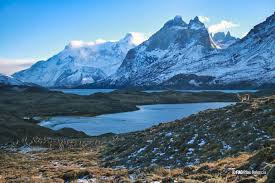Combating the Wildfire Crisis: A Pan-American Approach to a Global Challenge
The escalating climate crisis, exacerbated by anthropogenic activities, has significantly increased the frequency and intensity of wildfires across the Americas, presenting a considerable threat to biodiversity, human populations, and socio-economic stability. The catastrophic consequences necessitate a unified, proactive, and innovative approach to wildfire risk management, leveraging lessons learned from established strategies and integrating cutting-edge technologies. This article proposes a comprehensive framework for enhancing preparedness and response efforts throughout the Americas, grounded in established principles of disaster risk reduction and resilience-building.
1. Proactive Wildfire Risk Reduction: A paradigm shift towards proactive prevention is crucial, moving beyond reactive firefighting to comprehensive risk mitigation. This involves implementing evidence-based strategies such as prescribed burning (controlled burns) to reduce fuel loads, aligning with the principles of landscape-level fuel management and ecological restoration. Furthermore, integrating advanced spatial analysis techniques and predictive modeling, like those found within Geographic Information Systems (GIS) and agent-based modeling, allows for accurate risk assessment and targeted preventative measures. Early detection systems, utilizing satellite imagery analysis and sensor networks, are paramount for timely intervention, minimizing the impact of wildfire ignition and spread. The cost-effectiveness of prevention, compared to the exorbitant costs of suppression, further underscores the urgency of prioritizing preventative measures.
2. Strengthening Inter-agency and Cross-border Collaboration: Effective wildfire management mandates seamless collaboration among diverse stakeholders. This necessitates establishing robust communication networks and shared data platforms, leveraging the principles of collaborative governance. Clear roles and responsibilities, outlined within formalized agreements or Memoranda of Understanding (MOUs), ensure efficient coordination between national, regional, and local agencies, firefighting services, and communities. Regular joint training exercises and simulations, mirroring established incident command system (ICS) methodologies, are vital for enhancing interoperability and building capacity for unified action. Cross-border collaborations are essential for resource sharing and knowledge exchange, particularly during large-scale transboundary wildfire events.
3. Technological Advancements and Innovation: Investing in research and development of cutting-edge technologies is crucial for improving wildfire prediction, detection, and suppression. This includes advanced wildfire modeling incorporating climate change projections and employing machine learning algorithms for improved predictive accuracy. The development and deployment of innovative aerial firefighting technologies such as unmanned aerial vehicles (UAVs) or drones, along with enhanced aircraft capabilities, significantly improve suppression efficiency. Furthermore, exploring and implementing bio-engineering techniques and utilizing smart sensors for real-time fire monitoring enhances response capabilities and data-driven decision making.
4. Building Community Resilience and Adaptive Capacity: Engaging and empowering local communities is paramount. This involves implementing comprehensive fire safety education programs tailored to diverse populations, including those with disabilities or limited language proficiency, aligned with community-based participatory approaches. The establishment of community-based fire response teams, building on existing social networks and utilizing participatory approaches, fosters local ownership and strengthens community resilience. Regular community drills and simulations, complemented by accessible evacuation plans that incorporate principles of inclusive disaster preparedness, enhance preparedness and ensure efficient evacuation procedures.
5. Integrating Indigenous Knowledge and Traditional Ecological Knowledge (TEK): Indigenous communities possess invaluable TEK regarding fire ecology and land management, honed over centuries of experience. Integrating TEK into modern wildfire management strategies aligns with principles of environmental justice and ensures culturally appropriate and effective solutions. This requires active consultation with Indigenous leaders and the incorporation of TEK into decision-making processes, recognizing its significant contribution to comprehensive fire risk management.
6. Enhancing Firefighting Capacity and Training: Investing in highly skilled and well-equipped firefighting personnel is essential. This involves providing comprehensive training programs based on international best practices, including wilderness firefighting techniques, and ensuring access to state-of-the-art equipment and technologies. Regular training exercises and simulations, incorporating realistic scenarios and challenging conditions, prepare personnel for effective wildfire response. Continuous professional development and updates on evolving wildfire management techniques are crucial for maintaining optimal firefighting capacity.
7. Long-Term Ecosystem Restoration and Post-Fire Recovery: Post-fire ecosystem restoration is vital for long-term environmental health and resilience. This necessitates the implementation of comprehensive reforestation programs aligned with ecological restoration principles, supporting organizations dedicated to ecological recovery, and prioritizing biodiversity conservation efforts. Strategic land management practices that consider post-fire conditions and prevent future fires are fundamental for promoting healthy and resilient ecosystems.
8. Policy, Advocacy, and Public Awareness: Strong legislation and policies prioritizing wildfire prevention, management, and ecosystem protection are essential. This involves engaging with policymakers and advocating for increased funding for wildfire management programs. Raising public awareness about the causes and consequences of wildfires, emphasizing the role of climate change and the importance of responsible land management, is crucial for fostering a culture of prevention. Public awareness campaigns should promote sustainable practices and advocate for policies that reduce greenhouse gas emissions.
Conclusion and Recommendations: The escalating wildfire crisis demands a comprehensive and collaborative approach. By integrating proactive risk reduction strategies, advancing technological capabilities, fostering community resilience, and promoting regional cooperation, we can mitigate the devastating impacts of wildfires. Further research should focus on improving wildfire prediction models under climate change scenarios, developing innovative suppression technologies, and evaluating the long-term effectiveness of various ecosystem restoration techniques. The implementation of a Pan-American wildfire management strategy, incorporating the recommendations presented herein, is essential for creating a more resilient and sustainable future across the Americas. The success of such a strategy hinges on sustained commitment, robust funding, and effective cross-sector collaboration at all levels.
Reader Pool: Considering the complex interplay of factors contributing to the escalating wildfire crisis, what innovative strategies beyond those discussed could enhance the effectiveness and long-term sustainability of Pan-American wildfire management efforts?



